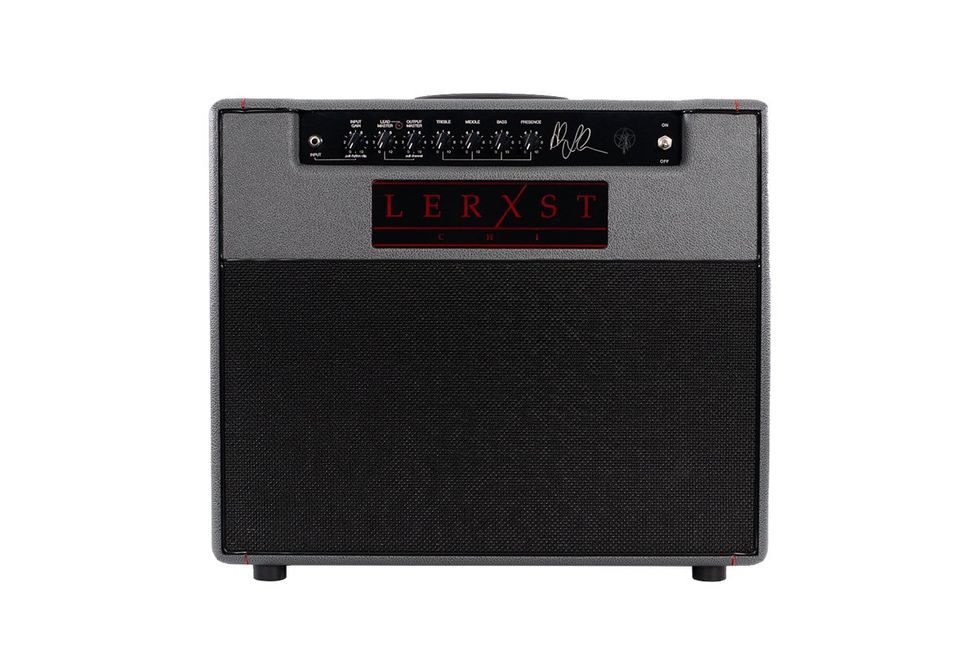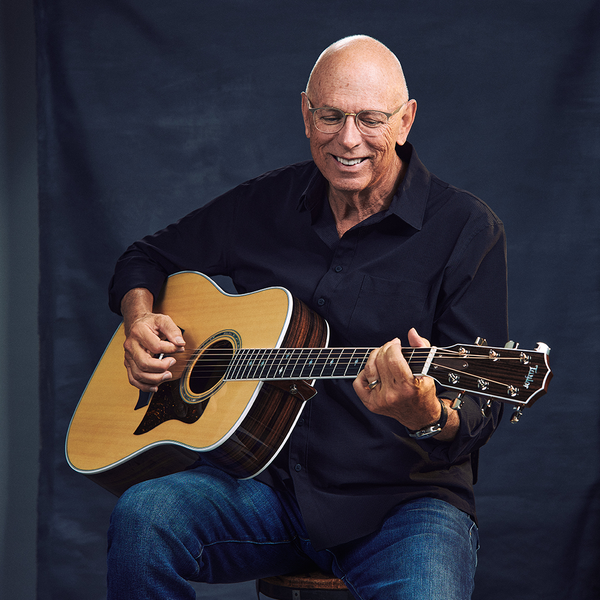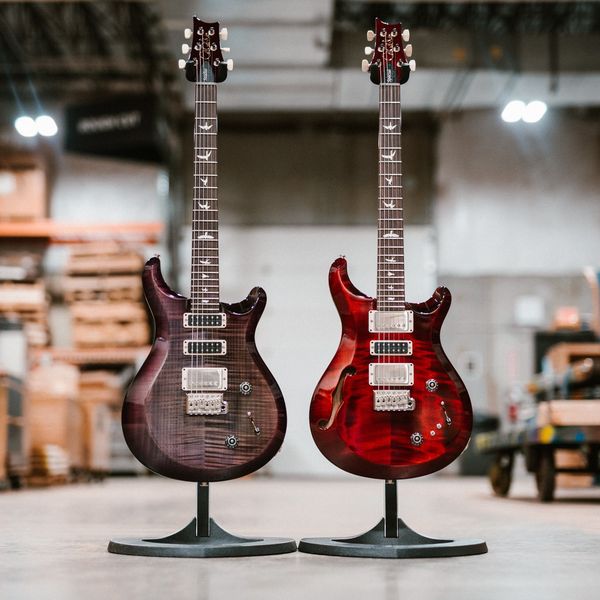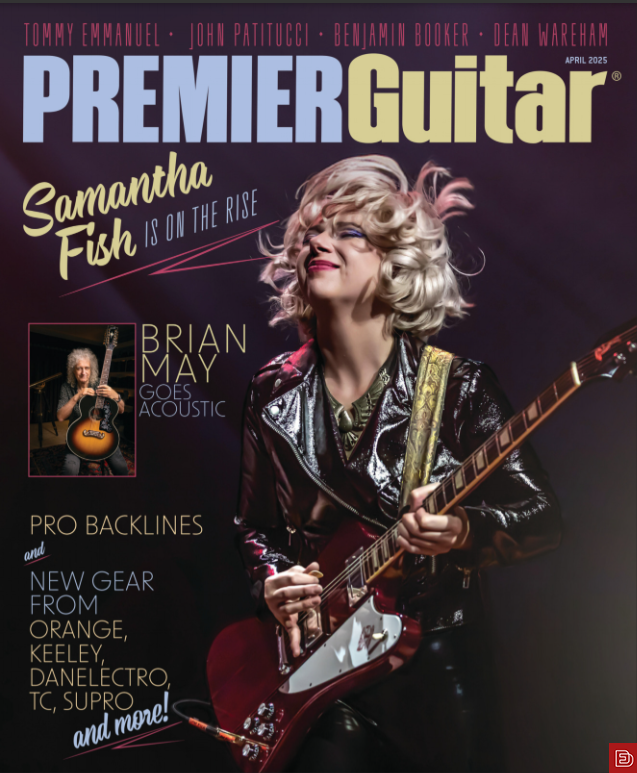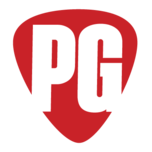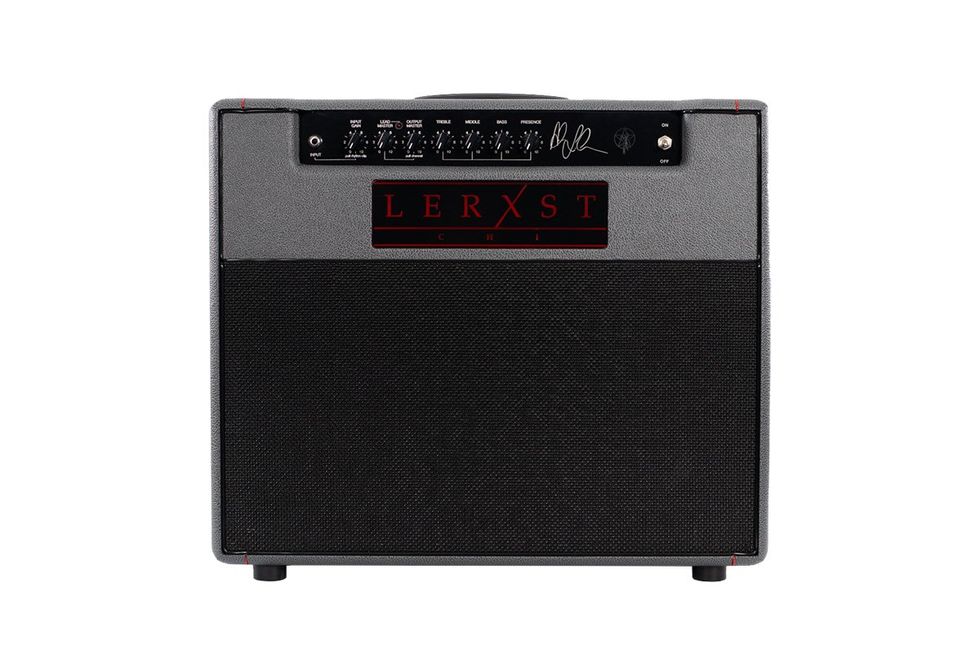
Alex Lifeson’s signature 30-watt, 6L6-powered combo offers tones from clean to scorching, that offer much more than just Rush sounds.
A powerful grab-and-go tube combo with gutsy lead and rhythm tones from an admirably simple control complement. Nice construction quality.
Independent lead and rhythm gain controls would be a plus.
$1,999
Lerxst Chi Combo
mojotone.com
In addition to being one of the world’s most-accomplished rock guitarists, Alex Lifeson is, it seems, a dab hand at product conceptualization, too. The latest evidence is the CHI Combo, a new addition to the Lerxst amp series, which is Lifeson’s collaboration with Mojotone of Burgaw, North Carolina.
The CHI was designed as an easily portable amp that Lifeson can reach for when a last-minute show pops up. It’s ostensibly “Marshall-y” in attitude, though it’s also very much a modern-voiced circuit with footswitchable clean and lead channels. It generates 30 watts via two 6L6EH output tubes and three 12AX7s in the preamp and phase-inverter stages. It’s a straight-ahead amp, wonderfully free of excess features to throw you off course. And while it's perfect for the diehard Rush fan (manual-suggested settings for several Lifeson signature tones, including “Limelight,” “Fly by Night,” and “Working Man,” confirm as much), there’s plenty here to satisfy guitarists outside the Canadian prog-rock obsessives club.
Greek to Me
The CHI exudes a businesslike demeanor, but it’s also stylish enough to stand apart from the scores of lookalike classic clones out there, dressed up as it is in race-grey levant vinyl, red-garnet piping, and black-matrix grille cloth. The logo panel sports a striking red font inspired by the text on the iconic Moving Pictures album cover, and the control panel carries an etched Starman graphic that lights up red when you flip the power switch (there’s no standby on this model). The 24" x 20" x 9", 49-pound amp, with its Baltic birch cabinet, feels solid and substantial, too. Mojotone’s reputation for quality cabinets extends back further than its amplifier business, and the company has supplied many top boutique amp builders. It’s easy to imagine why.
“Access to the fluid, singing tones that define much of Lifeson’s playing with Rush is easy.”
Controls include input gain, lead master, output master, treble, middle, bass, and presence, and there’s a pull switch for a “rhythm clip” function on the input gain, which adds a little dirt to erstwhile clean tones. Around back, you’ll find a jack for the single-button footswitch, a send and return for the effects loop, two 8-ohm speaker outs, and a single 16-ohm out. Inside, the CHI’s circuit is wired across a primary printed circuit board. Three smaller boards host output-tube connections, effects send/return and speaker outs, and the LED array that lights up the Starman. Workmanship is tidy throughout, with neat wire runs and tube sockets that are bolted to the chassis for support in addition to their connections to the respective PCBs.
The CHI’s 30-watt rating comes courtesy of cathode-biased 6L6s. The configuration slightly reins the power from these tubes, which can produce around 45 watts in a fixed-bias configuration, but they can often sound a little juicier and more harmonically complex when cathode biased. The setup also means you can replace the output tubes without having to reset their bias. (We will say, though, be careful when removing or reaching behind the amp’s upper-back panel: A sharp edge on the roughly cut protective screen left this reviewer with a slice on my index finger.)
A Ride in the Red Barchetta
Tested with a Gibson ES-355 and a Fender 1956 Stratocaster Reissue, the Lerxst CHI swiftly revealed itself as a versatile performer—able to do far more than the expected Lifeson-alike tricks that would appear to be its raison d’etre. Going straight to the gained-up lead channel with input gain set at 2 o’clock or more—a route that’s hard to resist on an amp like this—accesses a boatload of muscular grind, sustain, and sizzle. Attaining the fluid, singing tones that define much of Lifeson’s playing with Rush is easy. Dial down the input gain to noon or below, though, and you can tap into plenty of earthy, rootsy rock ‘n’ roll tones. A little tweak here and there delivers everything from gritty classic rock to dirty blues to gnarly garage-rock tones.
Rhythm channel tones will stay relatively clean at pretty hot settings, so you can play loud without sounding muddy. This capability will be a boon for texturalists who need headroom for detailed time-based and modulation effects. But the rhythm channel also works great with overdrive pedals (a TS10 Tube Screamer and Wampler Tumnus Deluxe both sounded excellent). Pulling out the input gain knob for rhythm clip is also an effective tool for adding dirt to the rhythm foundation. The overall level drops slightly, too, but since it’s not a footswitchable function you’re more likely to use this very practical mode with its own gain settings.
With that in mind, it’s worth noting that the CHI’s gain staging, and the knobs that control it, take some getting used to. Since input gain controls the drive level for both channels, you’re tied to finding a compromise between them, then balancing the lead output via the lead master control, and the overall volume of both channels at the output master. Including just one more knob to allow for both rhythm gain and lead gain controls would be more intuitive. As it is, the setup certainly works once you get the hang of it, and both channels can sound great, but it sometimes requires a little deviation from your ideal tone on one channel or another.
The Verdict
The Lerxst CHI combo is a convenient, versatile amp with more than enough punching power to keep up with a heavy drummer, and still sounds great when reined in to basement practice levels. While saturated rock sizzle is very much its forte, the medium-grind overdrive tones are appealing, and both cleans and clipped settings on the rhythm channel are useful and satisfying. Independent rhythm and lead gain controls would have been a plus, but the CHI combo has much to offer just as it is, whether you’re a Rush fan or not
Alex Lifeson Lerxst Chi Amp Demo by Zach Wish — Run the range of Rush riffage! | First Look
- Epiphone Alex Lifeson Les Paul Axcess Review ›
- Gibson Unveils Alex Lifeson Signature Les Paul Axcess ›
- Rig Rundown: Rush's Alex Lifeson ›
- Lerxst Limited Edition Wah/Blah Pedal Announced - Premier Guitar ›
Brent Mason is, of course, on of the most recorded guitarists in history, who helped define the sound of most ’90s country superstars. So, whether you know it or not, you’ve likely heard Mason’s playing.
Professional transcriber Levi Clay has done the deepest of dives into Brent Mason’s hotshot licks. At one point, he undertook the massive project of transcribing and sharing one of Mason’s solos every day for 85 or so days. Mason is, of course, on of the most recorded guitarists in history, who helped define the sound of most ’90s country superstars. So, whether you know it or not, you’ve likely heard Mason’s playing. Levi shares the insight he gleaned from digging deep, and he tells us what it was like when they shared a stage last year. Plus, Levi plays us some great examples of Mason’s playing.
For the first time ever, two guitar greats, John 5 and Richie Kotzen will be heading out on the road this year. The tour will launch October 16 and run through November, hitting markets across the U.S.
Find the full tour itinerary right plus a link for tickets & VIP, including additional dates featuring John 5 only. Reserved seating tickets will go on sale Friday May 16 though a fan presale will begin today at noon local time and fans are strongly encouraged to buy early to get the best seats.
Meet and Greets for both artists will be available. For John 5 please go to: https://john5store.com/collections/vip.
Today, John 5 also announces more details of his anticipated new album. Called The Ghost, it will be released October 10 and is led by the new track “Fiend,” featuring Kenny Aronoff.
John 5 continues running public tours this month for his Knights In Satan’s Service Museum of KISS Memorabilia in Los Angeles, California. Guided tours are open to the public for one month only (with a possible expansion). Current dates available are May 12-16, May 19-23 and May 27-30. Each will be led by John 5 himself who will provide tons of rich detail and answer any questions. Secure your place HERE.
JOHN 5 continues to tour with Mötley Crüe including an upcoming residency in Las Vegas in 2025.RICHIE KOTZEN &
JOHN 5 FALL 2025 TOUR
October 16 El Cajon, CA @ Magnolia
October 17 Riverside, CA @ Fox Performing Arts
October 18 Roseville, CA @ Goldfield Trading Post
October 19 San Jose, CA @ The Ritz
October 21 Phoenix, AZ @ Celebrity Theatre
October 22 Albuquerque, NM @ KiMo Theatre
October 24 Dallas, TX @ Granada Theater
October 25 Leander, TX @ The Haute Spot
October 27 New Orleans, LA @ House of Blues
October 28 Memphis, TN @ Minglewood Hall
October 29 Nashville, TN @ Fogg Street Lawn Club
October 30 Atlanta, GA @ Variety Playhouse
October 31 Orlando, FL @ House of Blues
November 1 Fort Lauderdale, FL @ Culture Room
November 2 Clearwater, FL @ Capitol Theatre
November 4 Richmond, VA @ The National
November 5 Leesburg, VA @ Tally Ho Theater
November 6 Patchogue, NY @ Patchogue Theatre
November 11 Glenside, PA @ Keswick Theatre
November 12 Derry, NH @ Tupelo Music Hall
November 13 Foxborough, MA @ Six String Grill & Stage
November 14 Stroudsburg, PA @ Sherman Theater
November 15 Lorain, OH @ Lorain Palace Theatre
November 16 Columbus, OH @ The King Of Clubs
November 17 Warrendale, PA @ Jergels
November 19 Wyandotte, MI @ District 142
November 20 Flint, MI @ The Machine Shop
November 21 Fort Wayne, IN @ Piere’s
November 22 St. Charles, IL @ Arcada Theatre
November 23 Belvidere, IL @ Apollo Theatre
November 25 Denver, CO @ Oriental Theater
November 29 Pioneertown, CA @ Pappy & Harriet's*
*John 5 only
AEROSMITH guitarist and songwriter JOE PERRY is set to return to the road for a series of August performances with THE JOE PERRY PROJECT. The 8-date run kicks off August 13 in Tampa, FL and wraps August 23 in Port Chester, New York, with an August 19 performance in PERRY’s Boston hometown (see the itinerary below). For the North American trek—which marks the first solo shows for PERRY this year—the legendary guitarist will be joined by his Aerosmith bandmates Brad Whitford (guitar) and Buck Johnson (keys), along with The Black Crowes’ Chris Robinson (vocals), and Stone Temple Pilots’ Robert DeLeo (bass), and Eric Kretz (drums).
“Well…it’s time to let the music do the talkin again,” PERRY says. “I’m really excited about the JPP line up this year!!!! Most of these guys played with me at The Roxy in L.A. at the debut event for my latest solo album [Sweetzerland Manifesto] in January 2018. They’re all busy as hell but thankfully they’re able to carve out some time for this run. And I’m not only lucky enough to have Brad Whitford onstage with me but Chris Robinson of The Black Crowes! [who sang ‘Fortunate One’ on Sweetzerland Manifesto MKII], Robert DeLeo and Eric Kretz from STP!!! and Buck Johnson who plays keys and sings with Aerosmith, the Hollywood Vampires, and is also a solo artist in his own right.”
For the shows, the Rock and Roll Hall of Fame inductee says “the set list is gonna include my fav JPP cuts, STP, Black Crowes, and with Brad we’ll be hitting the Aero hits and some deep cuts and then ya never know!!!! Gonna be a BLAST, and if you’ve ever been to one of my shows you know the words GARAGE BAND on STEROIDS come to mind! See you there!!!!”
DATE | LOCATION | VENUE |
Wednesday, August 13 | Tampa, FL | Seminole Hard Rock - Tampa |
Thursday, August 14 | Hollywood, FL | Seminole Hard Rock - Hollywood |
Saturday, August 16 | Toronto, ON | HISTORY |
Sunday, August 17 | Muskoka, ON | Kee to Bala |
Tuesday, August 19 | Boston, MA | Wang Theatre |
Wednesday, August 20 | Hampton Beach, NH | Hampton Beach Casino Ballroom |
Friday, August 22 | Mashantucket, CT | The Premier Theater at Foxwoods Resort Casino |
Saturday, August 23 | Port Chester, NY | Capitol Theatre |
A sample page from the author’s analog log.
Seasonal changes are tough on your acoustic. Here’s how you can take better care of your prized instrument.
As you read this, spring is in bloom in most of the US, or maybe it has been for some time. I’m timing this column specifically to ask acoustic guitarists, in this season of increasing humidity and comfortable conditions, to prepare for what’s coming. It’s never too soon, and time flies. Before you know it, we’ll be back to the maintenance phase and you might be blowing up the phones of your local guitar shops, luthiers, and techs. I’m here to encourage a decidedly old-school approach to preventative guitar maintenance, and yes, it starts now.
Why, you ask? Well, as the lead luthier at Acoustic Music Works, I can tell you that in my nearly 15 years in this position, this was the worst winter ever for preventable repairs on acoustic guitars. Fret sprout, bridge lifts, top sink, soundboard cracks, back cracks, loose binding, general malaise… These hit us very hard in the winter that spanned 2024 and 2025. Am I complaining? On the one hand, no. This is part of how we make our money. On the other hand, yes! Repair schedules related to dryness and humidity issues can stretch into weeks and even months, and nobody wants to be without their favorite instruments for that amount of time. With a little thoughtfulness, however, you might get through next winter (and every one thereafter) without hefty repair bills or time apart from your musical companion.
Our preparation is going to start with an unlikely but very important guitar accessory: the humble notebook. Plain, lined, grid, day planner… it doesn’t matter. We all need to actively participate in our instrument maintenance, and in my experience, fancy apps that track humidity via Bluetooth breed a kind of laziness, a feeling of safety that might prevent us from actually physically looking in on conditions. Better we keep an analog, well, log, so that we know where things stand, and I suggest checking in daily.
“This was the worst winter ever for preventable repairs on acoustic guitars.”
Track your relative humidity, both in the case and in the room where your instruments mostly reside, but also take notes on your action height, top deflection (StewMac has some great tips for measuring this) and anything related to playability that you believe you can observe empirically.
Dryness is the root cause of most guitar issues that manifest in the fall and winter months. Symptoms of dryness include sharp fret ends, falling action and dead frets, sunken top around the sound hole, and cracks and bridge lifts. With your trusty notebook, you’ll get a feel for the sensitivity level of your instrument, and that knowledge is power!
A few other basic implements will not only assist you in your observations, but may also satisfy your need to buy guitar-related things (at least for a minute). Getting quick and comfortable with a fret rocker is a great skill to have, and is invaluable in diagnosing buzzes due to high frets or frets that have come unseated due to dryness. A well-calibrated relief gauge might seem luxurious, but it can prevent you from making unnecessary or extreme truss rod adjustments. A string action gauge, or even a simple machinist’s rule or set of feeler gauges, will help you keep track of your action. Get a three-pack of hygrometers so you can average their readings, rather than depending on one.
Lest we forget: A guitar can not only be too dry, it can also be too wet. By beginning your maintenance diligence in the spring/summer, you’ll also be able to tell if your instrument is the victim of a too-humid environment. The signs of over-humidification are subtle: Your action may rise from a puffed-up top, and in extreme cases, glue joints could begin to fail. In my experience, an over-humidified guitar will suffer from dulled tone, almost like a sock in the sound hole. If you’re sensing a lack of clarity in your guitar all of a sudden, start with new strings. If it persists, it might be due to over-humidification, and you may want to introduce a desiccant to the case for a time. The more lightly built your guitar is, the more sensitive it will be to seasonal changes.
By getting into these habits early, you’ll be empowered by knowing your instrument more intimately. You’ll understand when and why changes in tone and playability might have occurred, and you’ll hopefully save on repair bills year-round. Feel free to reach out with any questions. Who knows? I might just send you a notebook with an AMW sticker on the cover!
